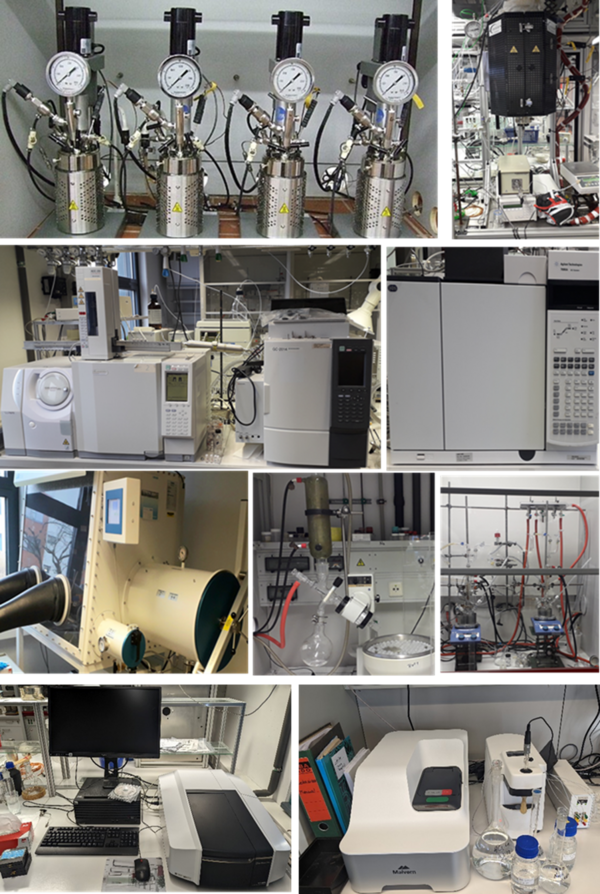Surface Chemistry in Applied Catalysis
Dr. Ali M. Abdel-Mageed
Background: Heterogeneous catalysis is an interfacial phenomenon in which molecules/atoms react on solid surfaces. Most chemical products are in contact with such catalytically active surfaces during their production. A deep understanding of these interactions is essential to develop future applied/industrial catalytic processes.
Mission: In our group, we aim at fundamental understanding of heterogeneous catalytic phenomena at the liquid/gas - solid interface under reaction conditions ranging from idealized to fully industrial conditions. To achieve this goal, the determination of structure-reactivity relationships for selected catalytic reactions is the focus of our research. We are developing comparative studies of some selected reactions at the gas/solid and liquid/solid interfaces for potential heterogeneous catalytic applications. The findings from these comparative studies will help us identify the beneficial catalytic regimes for potential applications.
Approach: The achievement of the described goal will be based on two main pillars. First, it involves the rational design and development of the catalytic materials for selected catalytic processes using state-of-the-art synthetic methods (sol-gel methods, deposition-precipitation, hydrothermal, ball milling, and photodeposition methods), focusing on, but not limited to, structurally tunable materials (metal-organic frameworks, 2-d materials, exposed crystal faces) that serve as carriers of active metal centers (single metal atoms, sub-nm clusters, nanoparticles, and molecular catalysts). Second, it involves in-depth and detailed characterization of the catalytic materials at various stages of catalyst preparation, activation, and during the reaction, in interplay with the achievable catalytic results under varying process conditions. In doing so, we work out structure-reactivity relationships of the catalytic materials not only by varying typical process parameters, such as pressure, temperature, load change, but also by changing the substrate phase (liquid vs. gas) as well as process control (batch vs. continuous). In addition to the analytical tools available at LIKAT, we use in particular tunable synchrotron X-rays, which are available at various storage rings in Germany and Europe.
Research in focus: We focus on selected catalytic processes in connection with the sustainable use of renewable raw materials as well as the chemical storage and conversion of renewable energies, ultimately with the aim of establishing resource-efficient and green technologies.
Research Facilities:
- Synthesis: Gloveboxes; furnaces, fume hoods; Centrifuges, ball milling
- Fixed-bed flow reactors for gas and liquid phase studies
- Autoclaves for reactions under high pressure (p: up to 100 bar; T up to 500°C)
- Analytics: Gas chromatography (Agilent & Shimadzu), GC/Mass.
- X-ray Absorption spectroscopy: Equipment (Reaction cells and analytics for operando-studies…etc.)
- Operando UV-vis spectroscopy (gas phase studies on solid catalysts)
- Zetasizer analyzer: Zeta-Potential and hydrodynamic studies in liquid phase

